Trappers Lake and the "Cradle of Wilderness"
Trappers Lake is the second largest natural lake in Colorado and home to a naturally reproducing population of Colorado River Cutthroat trout. The Flattops Wilderness in northwestern Colorado, home to Trappers Lake, was designated as a federal wilderness area in 1975, but the movement to preserve this precious sanctuary began half a century earlier.
“There are a number of places with scenic values of such great worth that they are rightfully the property of all people. They should be preserved for all time for the people of the Nation and the world. Trappers Lake is unquestionably a candidate for that classification.”
These words were first penned by Arthur Carhart in his 1919 report to the U.S. Forest Service (USFS). As a young landscape architect, Carhart was dispatched in the summer of 1919 to lay out summer homes and a road around Trappers Lake. In addition to his survey work, he spent time fishing and visiting with outdoorsmen camped in the area. They urged the Forest Service to spare the area from development.
Trappers Lake is known as “The Cradle of Wilderness”, and for good reason. Carhart’s experience at Trappers Lake left him with a new perspective on land management. His official report strongly recommended that the area around the lake remain roadless and undeveloped. At the time, this was a radical approach for a federal agency known for its utilitarian conservation. In an unprecedented move, Carhart’s superiors approved his proposal and the USFS established the Flat Tops Primitive Area in 1932. Carhart later collaborated with conservationist Aldo Leopold. These two men laid the foundation of the modern Wilderness concept.
Thanks to the foresight and vision of Arthur Carhart, anyone can visit Trappers Lake and experience it as he did over 100 years ago – wild and unspoiled. What an experience it is!
Getting to Trappers Lake in the Flat Tops Wilderness
Even by today’s standards, getting to Trappers Lake requires a commitment. From the Denver metro area, it is about a five-hour drive. There are so many other mountain playgrounds in the 1.5-2 hour range that few bother venturing all the way to Trappers Lake. This limited visitation is a good thing.
For my first visit, I chose the northern route that winds slowly through the White River National Forest. With fall colors on full display, this was one of the more memorable drives I’ve experienced. This route dumps you onto a well-maintained gravel road known as the Flat Tops Trail Scenic Byway. This 82 mile drive is scenic any time of the year (though signs warn of no winter maintenance), but I was amazed by the beauty of fall in northwestern Colorado. The next 1.5 hours became a leisurely drive through a tunnel of yellow, occasionally punctuated by openings that revealed postcard-worthy views. This was definitely nature’s color glory on full display.


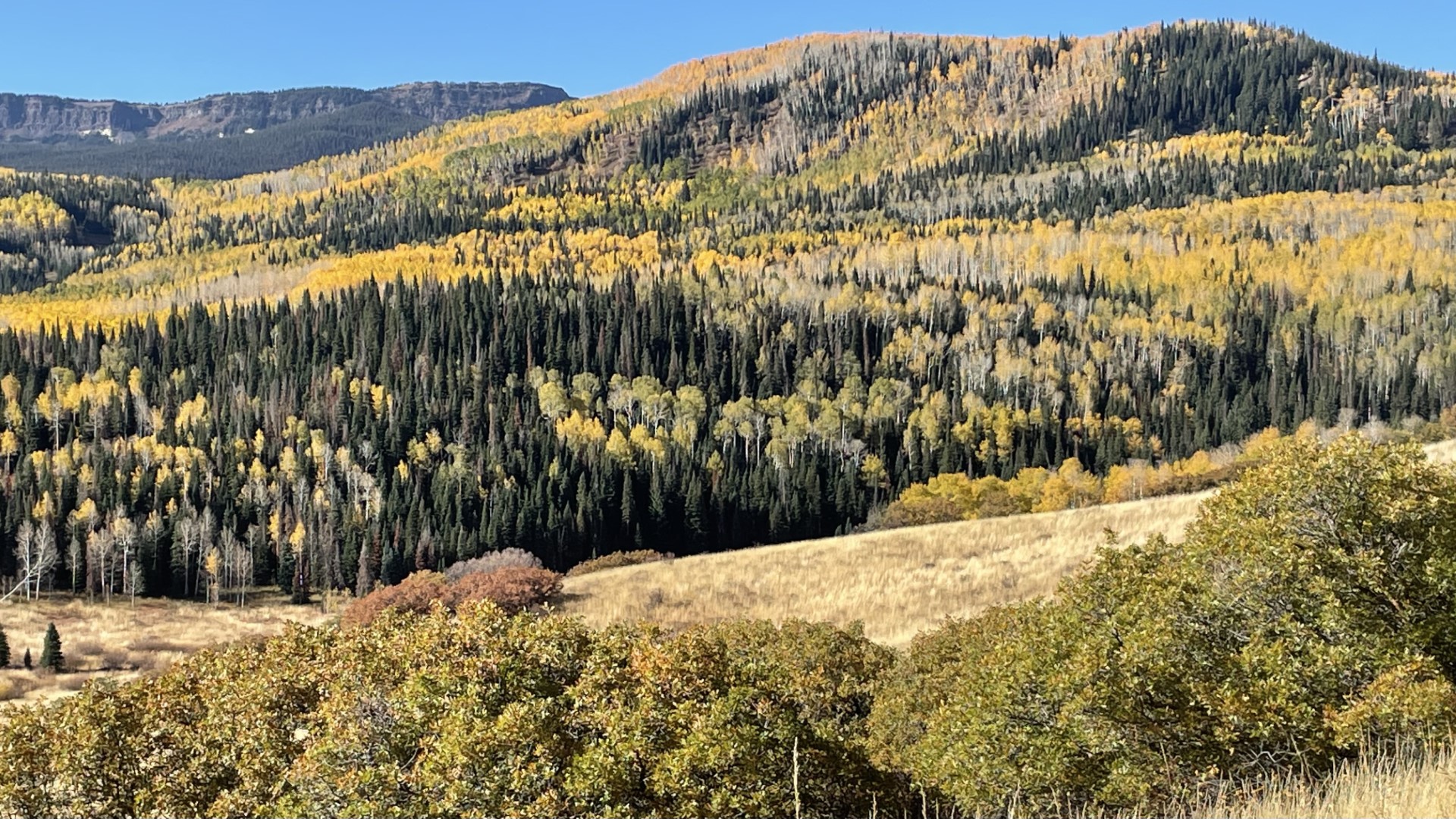
The last chance for gas is the little town of Yampa and I didn’t see pavement all the way to Trapper’s Lake. By the time I crested 10,343’ Ripple Creek Pass, all the stress of civilization had been left in the dust of my rear view. After a short descent a fork in the road presented itself. The Flat Tops Trail Scenic Byway continues right toward Meeker. Turning left here onto Trappers Lake Road begins the final eight miles leading to Trappers Lake.
Camping Near Trappers Lake
There are five USFS campgrounds at the end of Trappers Lake Road that sit at an elevation of 9700 feet. All of the campgrounds lie within the Blanco Ranger District of the White River National Forest. Only Shephard’s Rim Campground remained open this late in the season, and I arrived to find only one of the fifteen sites occupied.
Site #5 is protected by a stand of trees and opens up with expansive views to the northeast. From here I could see several small lakes that provided productive fishing in the early evening for native cutthroats. During my visit, I checked out all five Trappers Lake Campgrounds. Most sites have trees and are equipped with a picnic table and fire ring. Only one has an actual view of the lake (hint: it’s in Buck’s Campground, but you’ll have to find it for yourself.) They provide a great base for exploring Trappers Lake and the surrounding Flattops Wilderness.

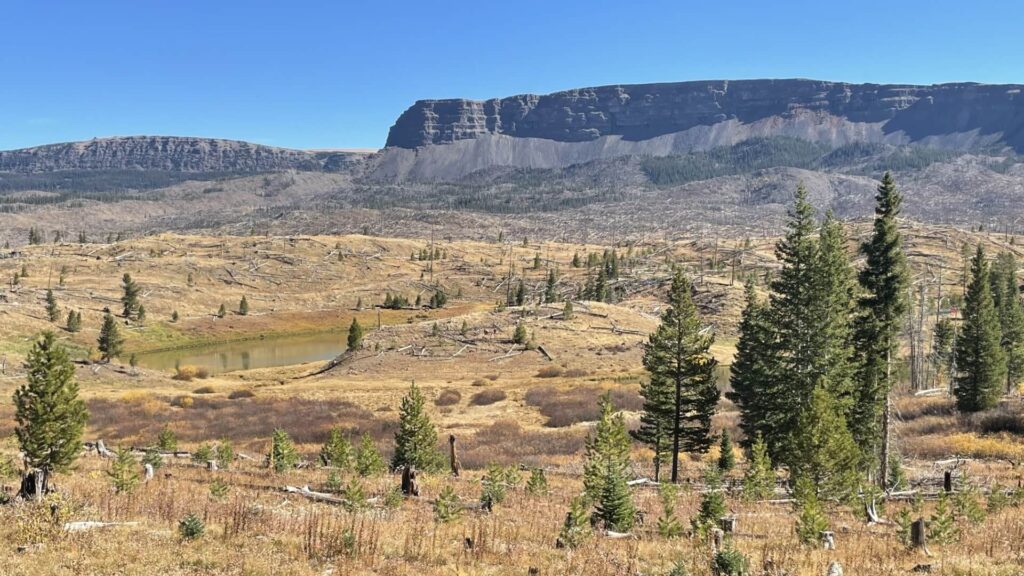
The one night I spent here proved to be one of the most secluded and peaceful experiences I’ve had in a developed campground. There are a few disadvantages to coming this late in the season: no water, turned over dumpsters, and limited restroom access. The Forest Service did waive the usual $22/night fee and the solitude far outweighed the negatives.
Before bed I slowly sipped a Great Divide Pumpkin Ale. With the sun slowly fading, October’s evening air became delightfully brisk. I watched as distant rock formations began to glow. The dogs enjoyed the freedom to chase chipmunks. Other than the “Yip-yip-yip-yee” of a coyote family calling to one another, silence blanketed the landscape.
Sometime around midnight, Cooper decided he needed a bathroom break. We emerged from the tent to find the temperature had dropped to 27 degrees F. I was not happy to be out of my sleeping bag until I looked up! The reward for venturing out of the warmth of my sleeping bag was a celestial kaleidoscope of color and light. We were far away from civilization’s light pollutoon. The night sky looked like an impressionist painting. I felt fortunate to be in such a special place.

Another nearby camping option is the USFS Himes Peak Campground (11 sites, no reservations) located 3.7 miles from the Trappers Lake Trailhead Parking. This site provides great access for fishing the North Fork of the White River within the national forest boundaries. All water upstream of the campground is public access all the way to Trappers Lake with good fishing for brookies, cutthroat, and rainbows.
Fishing in Colorado's Flat Tops Wilderness
The 235,24 acres that lie within the Flat Tops Wilderness are an outdoor recreation paradise. Backpacking, camping, fishing, hiking, horseback riding, and hunting can all be enjoyed here. For those in pursuit of native trout, Trappers Lake is one of the last strongholds for Colorado River Cutthroats. Within the wilderness boundaries there are approximately 100 other lakes and ponds, most unnamed, just waiting to be discovered. Additionally, there are roughly 100 miles of fishable streams in the Flat Tops Wilderness. There is certainly more trout water here than anyone could explore in a lifetime.
Colorado River Cutthroat Trout
Colorado has three distinct subspecies of native trout: Colorado River Cutthroat, Rio Grande Cutthroat, and Greenback Cutthroat. The waters of the Flat Tops Wilderness are home to the Colorado River Cutthroat Trout (Oncorhynchus clarkii pleuriticus). Trappers Lake is one Colorado’s best places to catch Colorado River Cutthroats (though recent genetic studies have hinted towards hybridization with Yellowstone Cutthroats.) Colorado Parks and Wildlife has been collecting eggs from Trappers Lake since 1913 to use in their hatcheries.

Flat Tops Wilderness Non-native Trout
Non-native brook trout can be found throughout the Flat Tops Wilderness, including Trappers Lake. Brook Trout juveniles outcompete the native Cutthroat due to differences in spawning times. To preserve the native cutthroat population, all brook trout caught in Trappers Lake must be removed. This makes the Flat Tops Wilderness a great place to keep a few delicious brookies for the frying pan.
The dogs and I spent the afternoon exploring the North Fork of the White River below Trappers Lake. We saw schools of small brook trout everywhere the stream slowed enough to form pools. We also took the short Lake of the Woods Trail (#2263). After a gradual 0.4 mile descent we arrived at the shore of a beautiful lake. Navigating off trail was difficult due to the downed trees from the 2002 Big Fish Fire. We didn’t see any fish cruising the shallows. Lake of the Woods is rumored to hold some surprisingly large brook trout up to 18 inches.

Flat Tops Wilderness Fly Selection
Overall, the Flat Tops Wilderness gets far less fishing pressure than many other destinations in Colorado. As a result, the fish here see far fewer flies throughout the season. Trappers Lake does have prolific hatches in the months of June-September, including a Callibeatis mayfly hatch. However, you can find trout in many of the smaller lakes and streams without “matching the hatch”. When putting together a Flat Tops Wilderness fly box focus on general attractor patterns. Humpies, stimulators, parachute Adams, mini chubby cherobyl’s, elk hair caddis, prince nymphs, hare’s ear nymphs, copper John’s, and wooly buggers in various sizes and colors all make good choices for high alpine lakes and streams.
Here in Colorado, there is a very popular and effective still water pattern known as Pops Bugger. It is a variation of the wooly bugger tied with synthetic palmer chenille that is both durable and flashy. The pattern is now commercially available through Umpqua Feather Merchants. Or, if you are in the Pagosa Springs area, stop by Let it Fly. Owner Mark “Pops” Miller is the originator of this fantastic fly pattern.
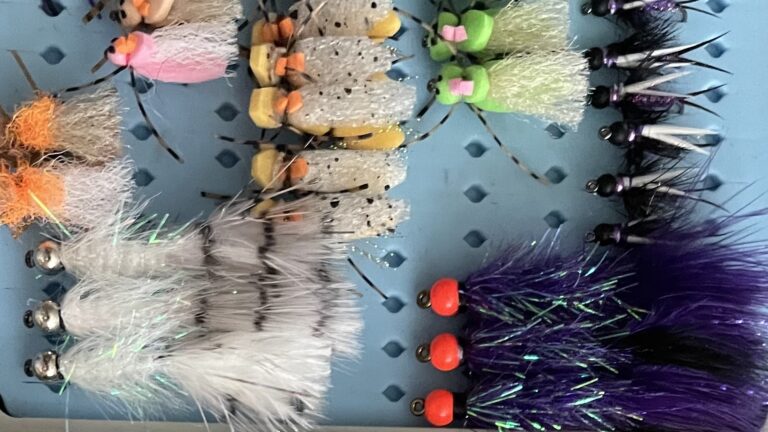
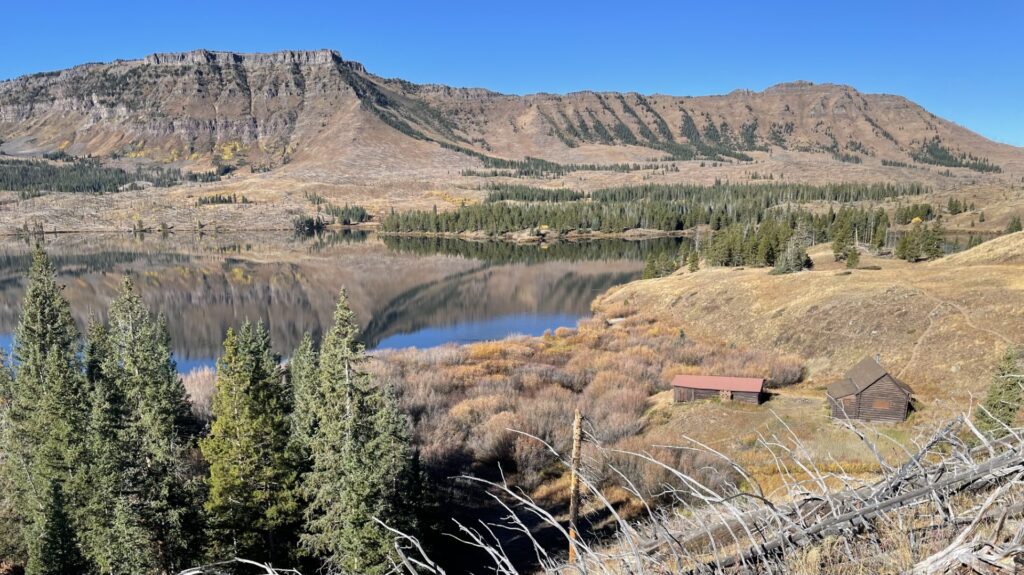

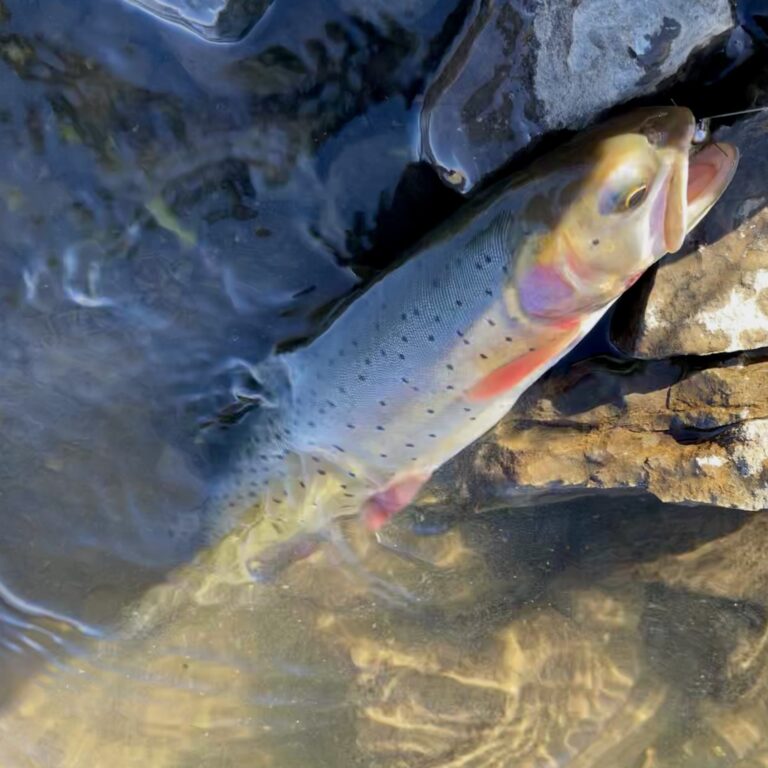


Fantastic! Everything you need to know for a successful Fly fishing trip to Trapper’s Lake. The information is precise and relevant with just the right amount of of your personal sentiment. I really appreciated the history and your pictures are amazing.